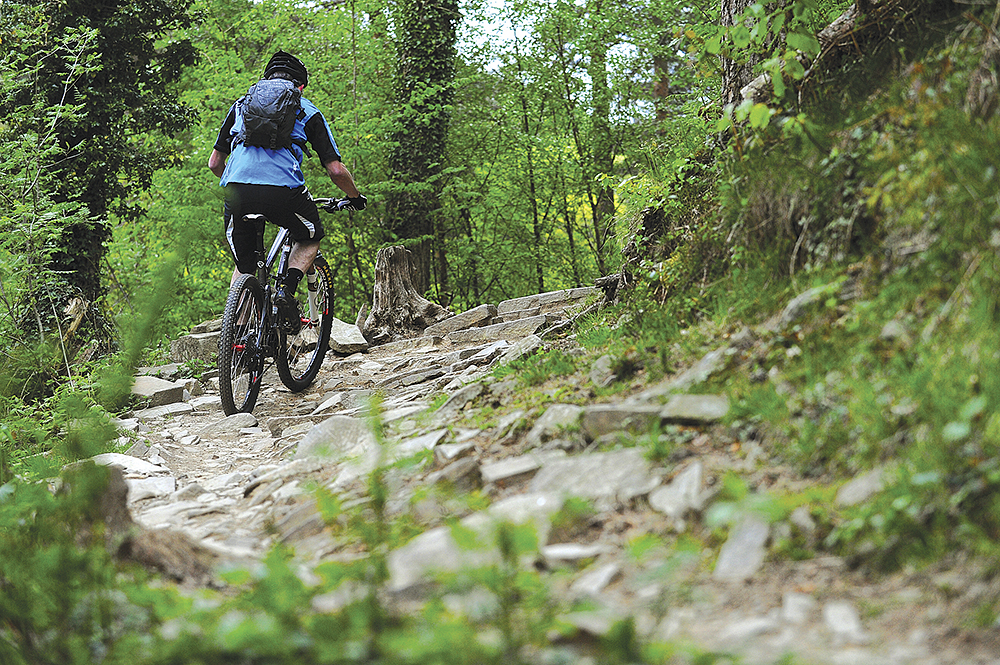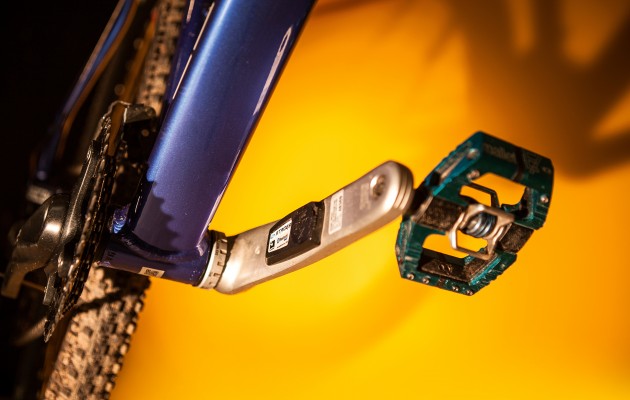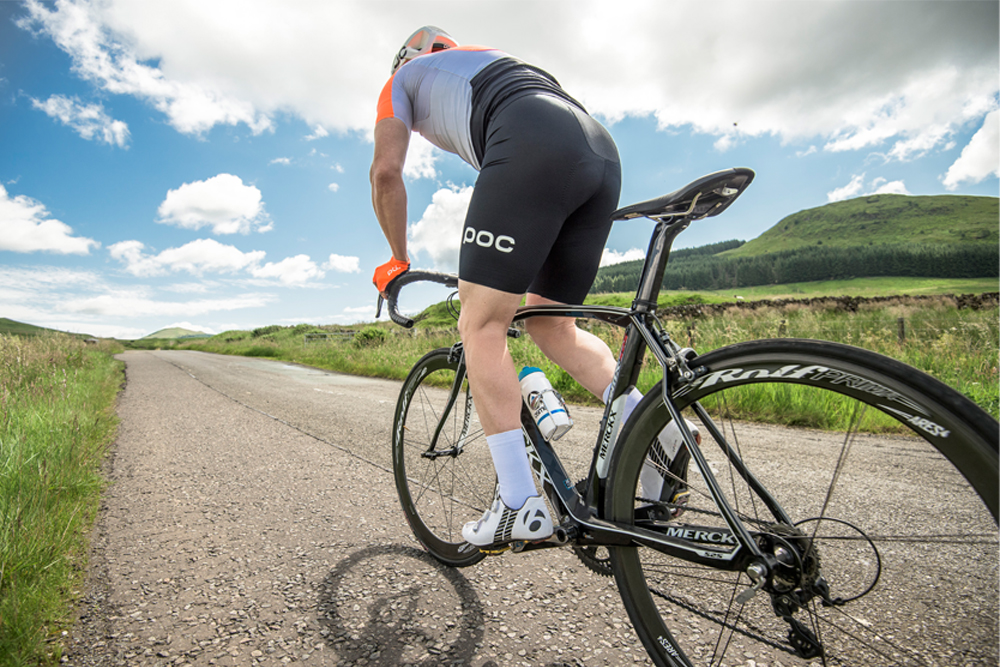Maybe those shaven legged MAMILs are on to something..?
It’s all too easy to glance over at our sibling cyclists and ponder just what the heck they’re doing. Why aren’t they mountain biking instead? Believe or not there are plenty of things that roadies know that we mountain bikers should learn from.
Read more: Best XC race bikes – hardtail and full suspension

Don’t just bear it, grin it
Going up hill can be just as fun
Sometimes, believe it or not, going up is the ends and the means. However slow we go, zig-zagging across the road dreaming of just one more gear, the satisfaction of reaching a summit – local hill or famous mountain – is huge and makes you want to do it all again (most of the time, anyway).
Next time you’re grinding your way up a fire road, wishing your granny gear was even easier, just take a deep breath and enjoy the effort. It’ll be even more rewarding once you reach the top, and you’ll love the descent more than normal.
Be proud to wear Lycra, it’s actually pretty comfy
You might think we all look ridiculous, and some of us do sometimes, but generally lycra can look good and it always feels great. Over long rides performance clothing is the best for wicking sweat away from the body, and definitely the most comfortable where it counts most.
Besides, there have been whispers that a lot of MTBers will stick a pair of lycra bib shorts on and then hide them away with a pair of baggies. Embrace the lycra, you might just like it.
Everyone should try clipping in
A number of MTBers do use cleats and clipless pedals, particularly those doing XC, but they aren’t the norm on a mountain bike in the way they are on a road machine.
There’s debate over which gives the better control of the bike, but power transfer through the pedals is far more efficient when you’re clipped in – something you’ll appreciate when riding up a steep gradient.
What’s more, a clipped in foot is unlikely to slip off a wet pedal, so no more pedal-in-back-of-knee situations.
You can get everything you need in your pockets
Almost every cycling jersey or jacket comes with ample pocket room for everything you could need – and if it doesn’t all go in there then a saddle bag comes in handy too.
What we don’t need, although you will see some people still sweating away wearing one on a sportive, is a backpack.
Read more: How to ride without a backpack
Freedom of movement and field of vision are more important on the road than the trail, of course, but stuff everything in your jacket next time you go riding and leave the backpack at home to feel the benefits.
Nutrition and recovery strategies
Some mountain bikers have said it’s not uncommon for a ride to include a stop at the pub or at least a bacon sandwich to finish.
Now, roadies love a cake and a coffee on the way round but most of us will also have a recovery shake once we get home. This kickstarts the recovery process ready for the next ride, something your legs will appreciate now that you’ll be riding rather than walking up every ascent.
Get to know your local area: start and finish your ride at your own front door
The joy of road riding is that the roads you ride can be those immediately outside your front door. There’s no need to head out in a car or on the train to seek out a rideable trail, and what’s more you can really get to know the area around where you live.
Read more: How to ride with a GPS
From time to time everyone will want to venture further afield, but knowing a great local loop you can do in an hour after work will increase time in the saddle no end.
Bikes don’t need suspension
Okay, so pretty much all experienced mountain bikers ride around on full suspension bikes these days but believe it or not you can ride a rigid bike or hardtail off-road and not only will you not die you’ll actually have fun.

Rulers at the ready
It’s alright to ask advice on bike fit
Asking someone (a bike fit professional, a bike shop employee or just a more experienced mate) to help you with your bike setup is common with road cycling. This is not the case with mountain biking.
There are too many people riding off-the-peg stock bikes out there who haven’t even tweaked the brake lever angle or the saddle rail position.

Group power
Riding in a group
This is principally done on the road to take turns in dealing with wind-resistance, which is pretty much irrelevant off-road where the speeds are slower and the gaps between riders need to be larger.
But there are more relevant group riding techniques that can help when riding off-road. One nice advantage in “taking your turn on the front” is that you can deal with opening gates in a fairer way.
Alternating who’s up front can also help slower riders (uphill and downhill) to alternate between leading and following.

It takes effort to find that rhythm
Rhythm
This follows on from the above point, if you get your gang working as a unit it can unlock one of the main experiences of road riding – getting in a rhythm. Rhythm can be all too elusive when riding off-road – some MTBers will have never experienced it.
Keep riding. Stop less. Stop for less time when you are stopped. Work as a group to keep the momentum. If you’re very lucky you too will find the magic of rhythm.
Using goals to motivate
The hardest bit about riding can often be putting your kit on. Roadies use event goals to motivate them off the couch, and on to the bike. Whether it’s a sportive or a trip to Morzine, having a goal will help encourage you mentally on days when your sofa looks more inviting than the rain lashing down outside or the turbo-trainer.
Keep moving
Roadies love to digest every ride down to excruciating detail — but do so after the ride. Stopping after every trail section to hold court takes up valuable riding time. Yes to a swift high five, but save the detailed breakdown for later.

Work on your weaknesses… secretly
We all love ragging it downhill, but solely sticking to one thing can often stifle skills and abilities. Roadies train their weaknesses, such as climbing and endurance, by riding more hills and more miles, or hit the gym to work on muscle imbalance. They keep it secret, too — so no-one can attack their Achilles heel in a race — and before long they’ve overcome the problem. Including one session of ‘weakness training’ a week will soon pay off, making you king of the trails.

Being shiny
In road racing, it’s common knowledge that fresh bar tape and a clean bike are worth 50 watts on a start line. Most importantly, though, being shiny prevents mechanicals and unwanted repair bills. Washing your bike after every ride allows you to check all of your equipment for wear and tear — a new chain is a lot cheaper than a whole drivetrain.

Riding with data
Every road rider dreams of being faster, fitter, and riding further. That’s why most roadies are geeks. Whether it’s power, distance, speed or heart rate, they use data to be specific with training and recovery, with the aim of finding improvements and helping them become efficient with their riding opportunities. Even a basic heart-rate monitor can stop you slacking off, or trying too hard and blowing too soon.









